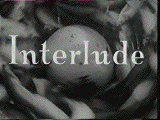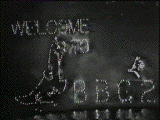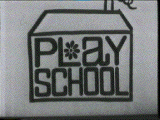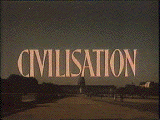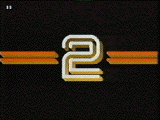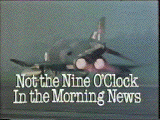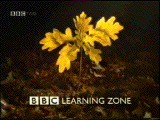|
|
|
|
|
|
Up to 1964 there were only two television channels in the UK: BBC and ITV, though if you lived on the boundary of two ITV areas it was possible to receive more than one ITV service, but the majority of the programmes would be the same. BBC2, it was hoped, would offer more than just 'more of the same' and would have an entirely different 'character' to the other two established networks. BBC2 would also be different in that it was (ans still is) transmitted using 625 lines on UHF channels as opposed to the existing 405 line VHF channels used by the existing services, though colour was still a few years away. |
|
|
|
From the start, BBC2 faced an uphill struggle. Because of the different line and frequency standards used, a new television was required along with an additional aerial in order to receive the new service. There were set-top boxes available to enable existing sets to tune in to BBC2, but this approach would miss out on the extra definition offered with 625 lines, which could only be realised with a dual standard receiver (as they were known) which had two tuners and a display tube capable of displaying both 405 and 625 lines. |
|
|
|
BBC2 had two kangaroo mascots which were used to publicise the new service, called Hullaballoo and Custard. The basic idea was that BBC2 was the new 'child' of BBC-tv (which was now to be known as BBC1 - though because BBC2 was only viewable in London and the Midlands to begin with, the idea was slow to catch on). |
|
|
|
BBC2's opening night was a total disaster; it was hit by a power failure, though the fireworks which featured the two kangaroos (the baby one jumping out of its mother's pouch) managed to shine on the opening night. Also because not everybody could receive the new service, programmes had to be repeated later on BBC1 after their first showing. |
|
|
|
The blackout meant that the first programme to be transmitted in its entirety was on the day after the official launch: Play School. This popular series for pre-school children survived into the 1980's until it was replaced by Playdays. |
|
|
|
Despite all of this BBC2 built up a loyal audience, courtesy of its quality programming which was often targeted at a more specialist audience. Top class documentaries such as The Ascent of Man helped give BBC2 (and the BBC in general) an enviable reputation that still exists to this day (despite later attempts to cheapen itself - my personal opinion !) |
|
|
|
What also helped BBC2 was that it was the first channel in the UK to start a colour service in 1967, though colour programmes were few and far between to begin with and colour televisions were expensive (see the Colour television page for more details). Having a second channel enabled the BBC to show (for example) more sporting action than was previously possible, as well as making room in the schedules on both channels for more imaginative programming. ITV was jealous. |
|
|
|
This freedom gave BBC2 the capability to show programmes catering for hobbies such as motoring (Wheelbase, later replaced by Top Gear), gardening (Gardeners World - see the BBC Gardening section for more information), and science (Horizon) and politics could be covered in greater depth than ever before. |
|
|
|
By 1980 BBC2 had developed comedy far beyond its original boundaries which were essentially derived from Victorian music hall productions. That Was the Week that Was (or TW3) had started the satirical trend on BBC1 (or BBC-tv as it was properly known at the time) in the 1960's, but BBC2 was free to develop ideas much further, being unhindered by the requirement to cater for a mass-market audience. Not the Nine O'Clock News brought together Mel Smith, Griff Rhys Jones, Rowan Atkinson and Pamela Stephenson for the first time in this comedy sketch show with satirical leanings. |
|
|
|
Despite the arrival of Channel 4 in 1982 which gave BBC2 direct competition for the first time, BBC2 continued to thrive throughout the 1980's by continuing to provide what it does best. Despite not being a 'mainstream' channel, BBC2 can draw quite large audiences (often exceeding 6 million) for its specialist shows, especially programmes such as Top Gear (a motoring show), and comedy such as French and Saunders. Top shows such as Absolutely Fabulous and Blackadder started on BBC2 before moving to BBC1, and stars such as Rowan Atkinson and Victoria Wood started their TV careers on BBC2 shows. |
|
|
|
BBC2 (in the late 1980's) developed an imaginative series of short animations to identify the station and define its essential character - or an 'ident' sequence. This is a still taken from a special one used over the Christmas period in 1990. |
|
|
|
BBC2 also has a reputation for being an educational channel; overnight it now runs what is known as 'The Learning Zone' which is a collection of educational programmes which features the 'Bite Size' GCSE examination revision aid series. Note also in the top-left hand corner the use of a superimposed caption which is used often during the Learning Zone period but not (currently) during the daytime and evening. |
|
|
|
BBC2 is also the only channel currently that you can see the famous Test Card F, though only currently in the gap between the Learning Zone and Open University transmissions on Sunday morning; it was also shown overnight on BBC1 up to November 1997 when the BBC started showing BBC News 24 (its new cable-based news channel which will also be one of the forthcoming digital terrestial channels) overnight instead. |
|
|
|
And finally - a still taken from another of the more commonly used ident sequences, featuring the new-style BBC corporate logo and typeface which was adopted in October 1997. Both the idents and the typeface were developed by Martin Lambie-Nairn, who also developed (among numerous other projects) the Channel 4 logo. |
